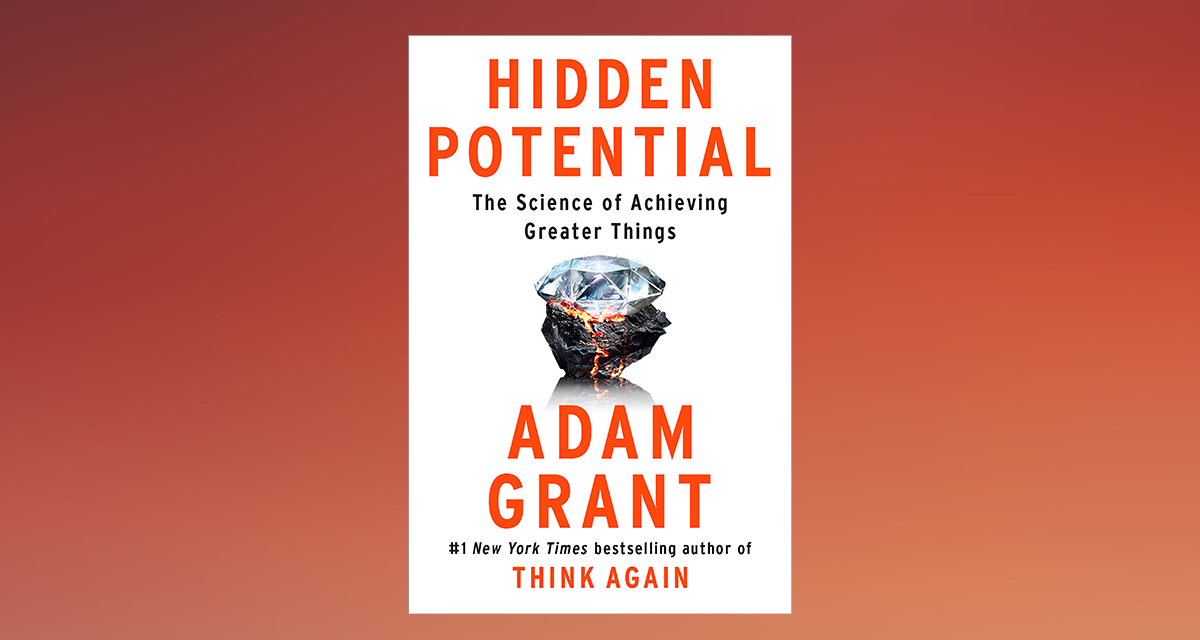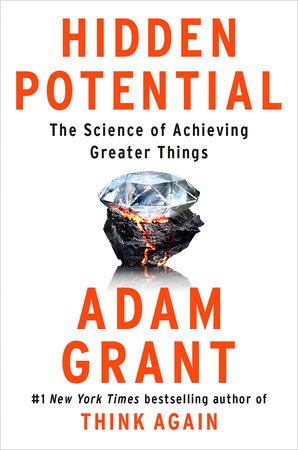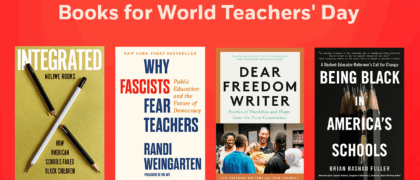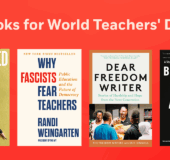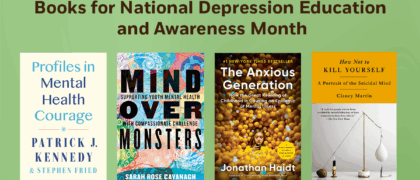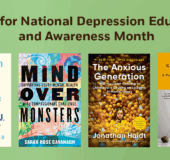Hidden Potential offers a new framework for raising aspirations and exceeding expectations. Adam Grant weaves together groundbreaking evidence, surprising insights, and vivid storytelling that takes readers from the classroom to the boardroom, the playground to the Olympics, and underground to outer space. Grant explores how to build the character skills and motivational structures to realize one’s own potential, and how to design systems that create opportunities for those who have been underrated and overlooked.
For decades, many American schools were run like assembly lines in a factory. Students were treated as interchangeable parts in the mass production of young minds. Despite having different strengths, they were stuck absorbing uniform knowledge through the same standardized lessons and lectures.
In the 1970s, a new wave of thinking upended the world of education. The core premise was that when students struggled, it was because the method of instruction wasn’t tailored to their learning style—the cognitive mode in which they were best at acquiring and retaining information. To grasp new concepts, verbal learners needed to read and write them; visual learners needed to see them illustrated in images, diagrams, and charts; auditory learners needed to hear them out loud; and kinesthetic learners needed to experience them through acting them out with body movements.
The theory of learning styles exploded in popularity. Parents were thrilled that their children were being recognized for their individuality. Teachers loved having the freedom to vary their methods and personalize their material.
Today, learning styles are a foundational element of teacher training and student experience. Around the world, 89 percent of teachers believe in matching their instruction to students’ learning styles. Many students have told me they prefer podcasts to books because they’re auditory learners. Did you decide to read this book with your eyes because you identify as a verbal or visual learner?
There’s just one small problem with learning styles. They’re a myth.
When a team of experts conducted a comprehensive review of several decades of research on learning styles, they found an alarming lack of support for the theory. In controlled experiments with specific lessons and longitudinal studies over the course of a semester, students and adults didn’t do any better on tests when their teachers or study habits aligned with their abilities or their preferences. “There is no adequate evidence base to justify incorporating learning styles assessments into general educational practice,” the researchers conclude. “The contrast between the enormous popularity of the learning-styles approach within education and the lack of credible evidence for its utility is . . . striking and disturbing.”
We don’t want to go back to the rigid factory model of learning. But people shouldn’t be pigeonholed in a rigid learning style either. Of course, you might still have a preferred style of acquiring new knowledge and skills. What we now know is that your preference isn’t fixed, and playing only to your strengths deprives you of the opportunity to improve on your weaknesses.
The way you like to learn is what makes you comfortable, but it isn’t necessarily how you learn best. Sometimes you even learn better in the mode that makes you the most uncomfortable, because you have to work harder at it. This is the first form of courage: being brave enough to embrace discomfort and throw your learning style out the window.
One of the best examples I’ve seen is in comedy. When Steve Martin first started doing stand‑up performances in the 1960s, he bombed over and over. During one show a heckler actually stood up and threw a glass of red wine at him. “I was not naturally talented,” Steve reflects. His early critics agreed: one wrote that he was “the most serious booking error in the history of Los Angeles.”
If you think about how great performers master their craft, it seems natural that they would learn through listening, watching, and doing. That’s what Steve did: he would listen to other people’s material, watch their mannerisms, mix in some of his own stories, and practice delivering the concoction. Despite pouring countless hours into preparing for them, his performances were lackluster. One night he went five minutes without a single laugh . . . and another five minutes . . . and another. As he sweated onstage, there wasn’t even a chuckle for twenty straight minutes. Watching, listening, and doing weren’t enough to drive his growth.
The one approach to comedy that Steve had written off was writing—it wasn’t his style. He hated writing, because it didn’t come naturally to him: “It was hard, so hard.”
If you feel that way about writing too, you’re not alone. Even some of the best writers I know will do almost anything to put off writing.
Procrastination is a common problem whenever you’re pushing yourself beyond your comfort zone. As blogger Tim Urban describes it, your brain gets hijacked by an instant gratification monkey, who picks what’s easy and fun over the hard work that needs to be done. All you have to show for your time is a profound sense of inadequacy and idleness. You’ve burned your self-esteem to ashes of shame.
Many people associate procrastination with laziness. But psychologists find that procrastination is not a time management problem—it’s an emotion management problem. When you procrastinate, you’re not avoiding effort. You’re avoiding the unpleasant feelings that the activity stirs up. Sooner or later, though, you realize that you’re also avoiding getting where you want to go.
For a while, Steve Martin procrastinated on writing his own jokes. Why would he sit down alone to do something he hated when it was so much more fun to borrow other people’s material and improvise onstage? His instant gratification monkey was in the driver’s seat. But after a few years of struggling at stand‑up, he recounts, he had a “horrible revelation that if I was going to be successful as a comedian, I’d have to write everything myself.”
Steve worked up the nerve to venture beyond his comfort zone. He would learn to write jokes. When he heard that a variety show was looking for young writers, he submitted some material, but it didn’t make the cut. “I didn’t know how to write,” Steve told me. The head writer took a chance on him anyway—he’d seen Steve play the banjo, found him quirky, and paid him out of his own salary. When Steve was asked to write an intro for a bit, he froze. His writer’s block was so bad that after failing to type a single word, he called his roommate to borrow a joke. It was good enough that they hired him.
For the next few years, Steve wrote for TV by day and did stand‑up by night. Writing was a slog, but he was becoming more comfortable with it. Meanwhile, he kept crashing and burning onstage. His agent told him, “Stick to writing.”
What his agent didn’t know was that Steve was growing as a performer through writing. Onstage, speaking off-the-cuff made it easy to ramble. On paper, writing forced him to trim the fat. The painful process of jotting down his material taught him to strip his humor down to the basic elements, “because it’s all about the bare bones of something,” he said. “The way a joke’s structured, it can’t be too elaborate.” It wasn’t until he embraced the discomfort of writing that he honed his ability to develop killer punch lines like this one: “I handed in a script last year and the studio didn’t change one word. The word they didn’t change was on page 87.”
By the mid-1970s, Steve was one of the most popular stand‑up comedians in America. He was selling out huge arenas on national tours, hitting platinum with a comedy album, and doing stand‑up on Saturday Night Live. Along the way, he grew to love writing, and it also opened the door to his acting career—if not for his newfound writing skills, he would never have written and starred in his breakout movie, The Jerk.
I’ve seen many people shy away from writing because it doesn’t come naturally to them. What they overlook is that writing is more than a vehicle for communicating—it’s a tool for learning. Writing exposes gaps in your knowledge and logic. It pushes you to articulate assumptions and consider counterarguments. Unclear writing is a sign of unclear thinking. Or as Steve himself quipped, “Some people have a way with words, and other people, uh . . . oh, not have a way.”
The lesson is not that everyone who hates writing should do it anyway. It’s that if we avoid the discomfort of learning techniques that don’t come easily to us, we limit our own growth. In the words of the great psychologist Ted Lasso, “If you’re comfortable, you’re doin’ it wrong.”
Copyright © 2023 by Adam Grant. All rights reserved. No part of this excerpt may be reproduced or reprinted without permission in writing from the publisher.

© Jamey Stillings
Adam Grant is an organizational psychologist at Wharton, where he has been the top-rated professor for seven straight years. His books have sold millions of copies, his TED talks have been viewed more than 30 million times, and he hosts the hit podcast Re:Thinking. His pioneering research on motivation and meaning has enabled people to reach their aspirations and exceed others’ expectations. His viral piece on languishing was the most-read New York Times article of 2021 and the most-saved article across platforms. He has been recognized as one of the world’s ten most influential management thinkers and Fortune‘s 40 Under 40, and has received distinguished scientific achievement awards from the American Psychological Association and the National Science Foundation. Grant received his B.A. from Harvard University and his Ph.D. from the University of Michigan, and he is a former Junior Olympic springboard diver. He lives in Philadelphia with his wife and their three children.

